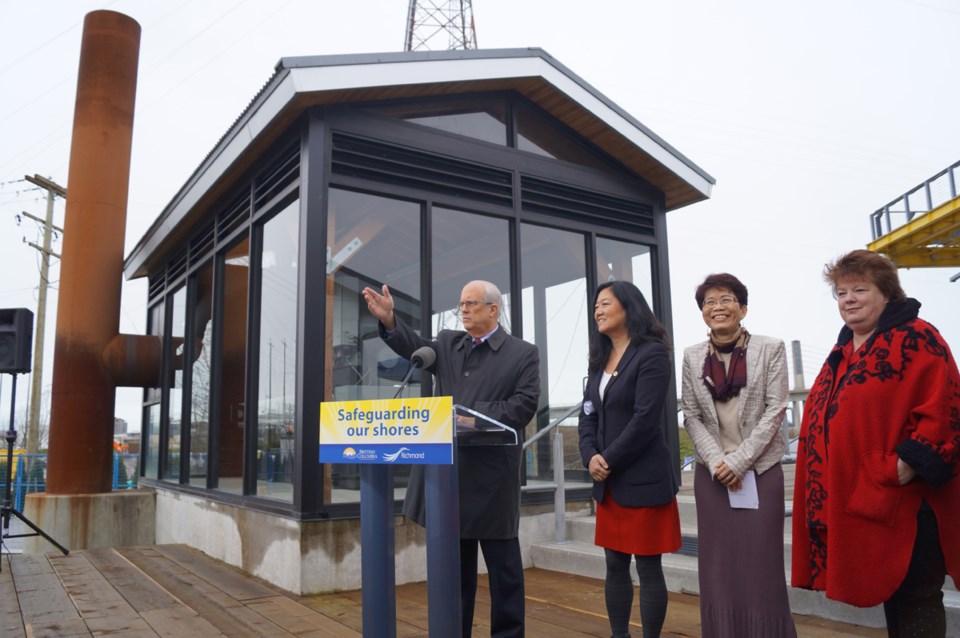B.C.’s Minister of State for Emergency Preparedness Naomi Yamamoto was in Richmond Thursday morning to announce funding for four drainage pump upgrades in a city that will eventually find itself completely below sea level.
The province will spend $16.6 million with the City of Richmond chipping in $8.3 million this year to upgrade the four pumps that have reached the end of their lifespan. Some money will also go to enhancing 1.7 kilometres of the north dyke.
Yamamoto rolled out the red carpet at the new No. 4 Road pump, one of Richmond’s workhorses, with four 2,700 horsepower engines that can drain 6,000 litres of water per second.
“We applaud communities like Richmond who are investing in mitigation work and are happy to work collaboratively with them to help limit the risk our citizens could be exposed to,” said Yamamoto.
She added it’s imperative to prevent flooding in Richmond. The province estimates a flood such as the one in 1894 in the Fraser River estuary would cost $7 billion. She noted Calgary’s 2013 flood cost about $6 billion.

The pumps are said to be designed for a one-in-10-year rainstorm. Prior to rainstorms the pumps evacuate water from drainage canals and ditches. Presently, the elevation of Richmond’s dykes can provide protection for a one- in-200-year flood event.
Richmond is gradually upgrading its pumping capacity. Richmond’s 39 electronically-monitored pump stations (112 pumps) presently have a combined capacity of 82,000 litres per second, up from 68,000 in 2006.
In total, there were approximately $4.2 million of drainage system upgrades completed in 2015, according to a recent planning report to city council. Presently, work is underway on four pump stations: Bath Slough, No. 2 Road, Horseshoe Slough and No. 7 Road.
The pumps discharge rainwater during storms and in the event the Fraser River spills over the dikes during high tide, they would empty the water when the river subsides.
The city and province are planning to be prepared for sea level rise of about 1.2 metres in the next 100 years. As such, Richmond will be required to raise its dykes by 1.2 metres.
“King tides, the spring freshet and rising sea levels are just a few of the demands on our resilient drainage system,” said Mayor Malcolm Brodie who noted hundreds of millions of more dollars will be needed to keep Richmond dry.
“Obviously, the city cannot bear these costs alone,” said Brodie, noting the city spends, on average, about $10 million a year on dykes and drainage, from a dedicated utility budget.
One of the more unique aspects of Richmond’s flood protection plan may be the likely addition of a sea gate in Steveston Channel. The gate would compliment an upgraded dyke along Shady Island, meaning dyke upgrades won’t be needed for the developed Steveston shoreline.
Furthermore, new major pump houses are becoming more visually appealing, in stark contrast to the classic brick, cubed structures normally found at either end of arterial roads.
The No. 4 Road pump facility features two glass houses (pump house and backup generator house) – for the public to view the mechanics of the system – as well as a lookout platform with an art mural beside picnic benches.
It’s also interactive in so much that you can stand on the pumps and see the water rush beneath your feet through a metal grate floor.
Pumped up by the Numbers:
Richmond has:
39 – Pump stations
49 – kilometres of dyke
600 – kilometres of drainage pipes
82,000 – litres/second of pumping capacity



